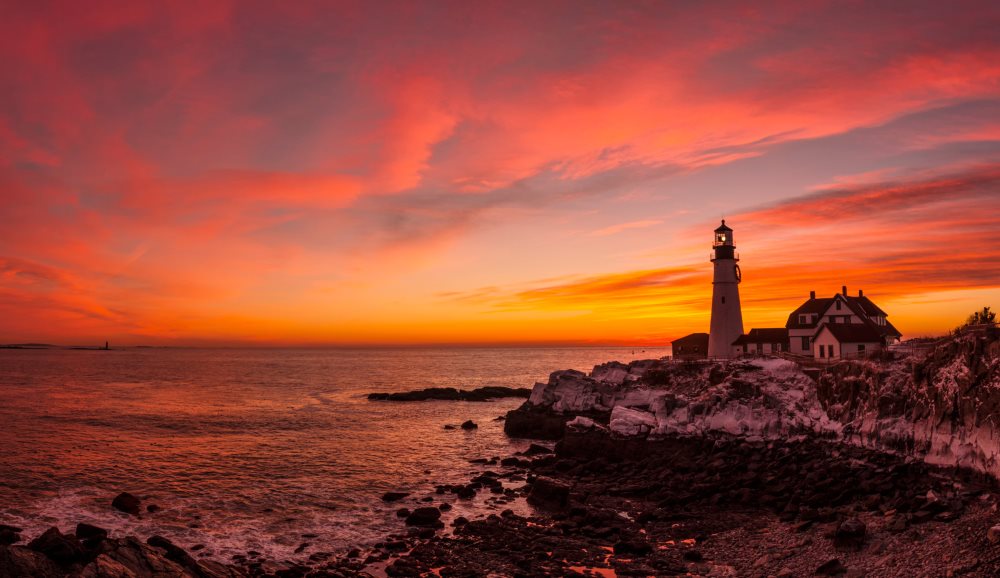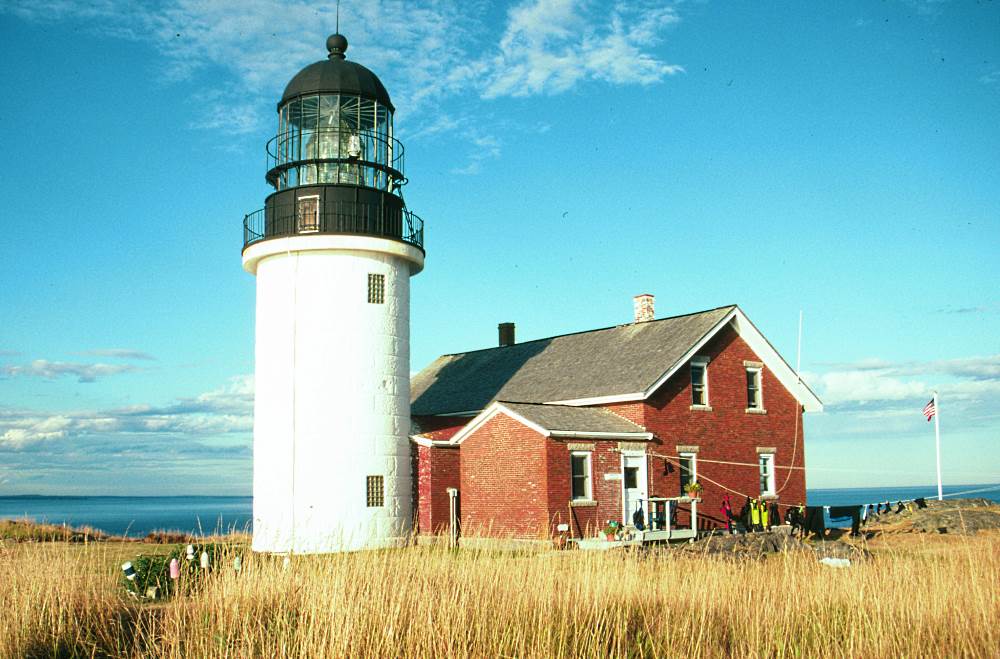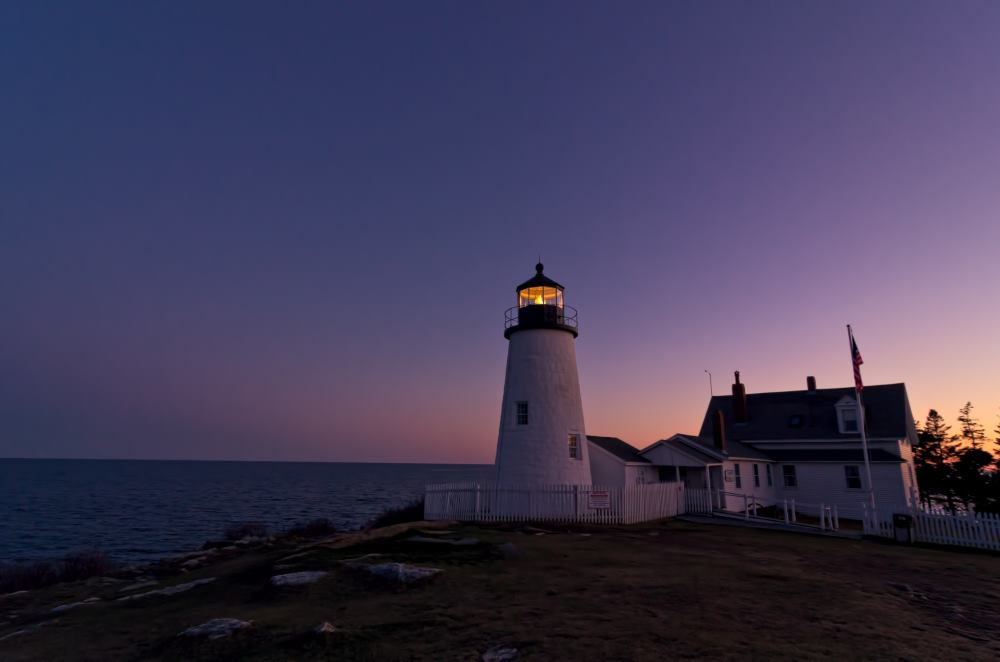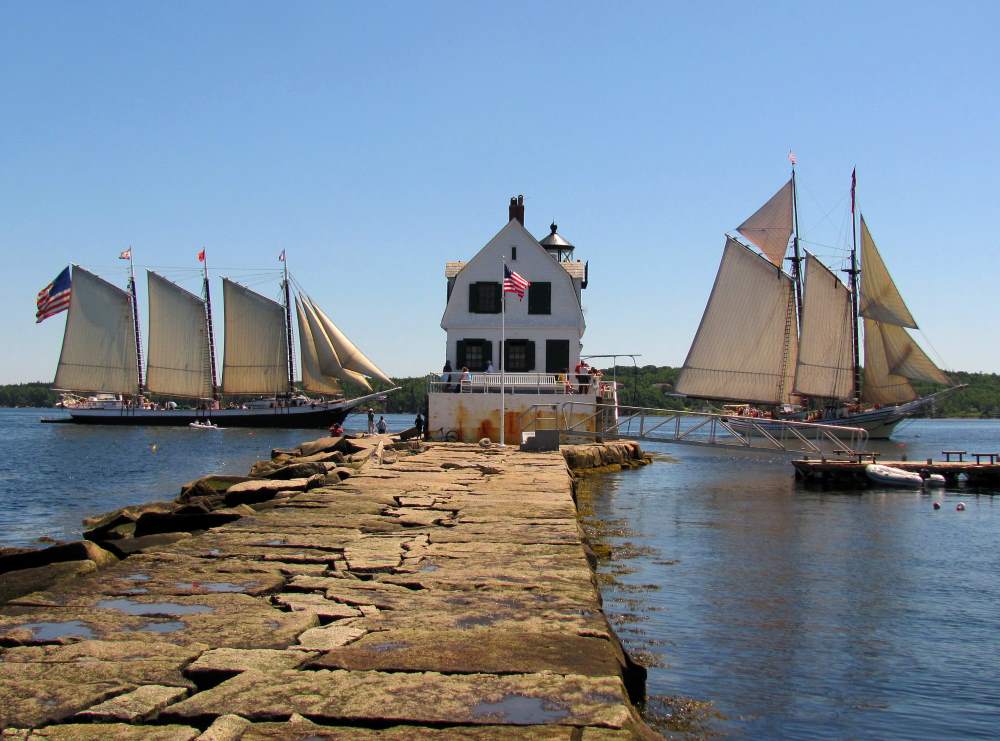Maine’s lighthouses — these iconic beacons that line the coast and shine from islands — are as ubiquitous in Maine as lobster. There are 65 lighthouses in the state and at least 60 are still operating, casting their warning lights over the sea each night, their foghorns sounding through the mist. Maine’s lighthouse history goes back centuries; the first lighthouse ever commissioned by George Washington in 1791 was the Portland Head Light and still is a working beacon.

Today, while lighthouses no longer play the same vital role in maritime safety as in the past, the U.S. Coast Guard maintains the more than 60 working lights along Maine’s coast, but preserving the historic structures that house them is frequently the role of local municipal and nonprofit organizations that want to protect this link to Maine’s maritime heritage. The Coast Guard has transferred more than 30 of Maine’s historic lighthouse structures into the hands of these organizations under the Maine Lighthouse Program, a pilot program established to preserve these historic structures, now coming up on its 20th anniversary. The Maine Lighthouse Program became the model for the National Lighthouse Preservation Program in 2000, which has preserved more than 120 lighthouses across the country.
Today, local preservation groups up and down the Maine coast raise money and donate time and labor to maintain these important connections to the state’s maritime heritage for future generations. For them, this important work is largely a labor of love. Many of Maine’s lighthouses exist today and are still accessible to visitors because of the numerous dedicated volunteers. According to Bob Trapani, Jr., executive director of the American Lighthouse Foundation, volunteers are our modern day “lighthouse keepers.” Without the more than 1,000 people in Maine who give freely of their time and talents, most every lighthouse would suffer immeasurably in one or more aspects.
“Light station structures would begin to look shabby and deteriorate, and the public would be denied the cultural and educational opportunities associated with lighthouses being open or available for overnight-stay programs,” says Trapani. “Without volunteers raising additional funds, lighthouses would be denied professional restoration when necessary due to a lack of monies that cannot be obtained from other sources.”

One such crucial volunteer job is being lighthouse caretaker for the Seguin Island Light Station each summer, from Memorial Day to Labor Day. These volunteers live on the tiny island in the Keeper’s Quarters, and are responsible for numerous tasks including maintaining the grounds, giving tours to guests, and maintaining a daily log of activities, weather conditions, and impressions of the island, for historical purposes. Seguin Island is only accessible by boat so volunteers must be prepared for life the way it was for keepers and their families back in the day.
Visit Maine: Serendipity
The Keepers of Burnt Island Light in Boothbay Harbor use volunteers for their Living Lighthouse Program — volunteers act out the roles of a former lighthouse keeper and his family, describing what life was like on the island without electricity, running water or refrigeration. Volunteers also are responsible for keeping the shoreline clean, and the trails and structures maintained.
Volunteers are a critical part of the Spring Point Ledge Light Trust’s success in maintaining and preserving the lighthouse in Portland’s Harbor. Volunteers lead tours, teach visitors about the lighthouse and its historic role in Portland Harbor, and point out the landmarks surrounding the lighthouse.
While volunteering is not for everyone, you can still enjoy spending some time at many of Maine’s lighthouses, usually in the summer months. If there is an entry fee, or requested donation, those important funds go to the continuing preservation of the beloved coastal guardians. If in search of lighthouses to access, you have quite the selection. Recently, the American Lighthouse Foundation moved to Owl’s Head Light at the mouth of the Rockland harbor. Now the 1854 former keeper’s house triples as offices, gift shop, and interpretive center. The 1825 tower is open on a regular schedule, weather and volunteers permitting.
Pemaquid Point Light in Bristol is open during warmer months to visitors for a mere $3 fee. This famous lighthouse is the one on the Maine Quarter; it is on a dramatic peninsula of striated granite that makes it one of the most photographed.

Burnt Island Lighthouse is accessible by boat and is open during the height of summer. You can take a boat tour to the island or kayak there on your own. The tower is closed to visitors during the Living Lighthouse Tour on Mondays and Thursdays from 2-4 p.m. Visitors are requested to make a much-needed donation, in order to keep the structures and electricity maintained.
The West Quoddy Head Lighthouse has been an aid to navigation since it was first built under the order of President Thomas Jefferson in 1808. It came into its own as a tourist destination in 2002 when the nonprofit West Quoddy Head Light Keepers Association (WQHLKA), opened the 1858 Keepers’ House as a visitor center, museum and art gallery. The easternmost point in the contiguous United States is distinguished by the red and white striped tower pattern in a picturesque setting with the cliffs of Grand Manan, New Brunswick, Canada, in the distance.
While there are many lighthouses accessible regularly, some are closed to the public except for one single day every year — the second Saturday in September. On September 9, 2017, at least 23 lighthouses will be open to the public on Maine Open Lighthouse Day. Sponsored by the U.S. Coast Guard, the Maine Office of Tourism and the American Lighthouse Foundation, this annual event attracts 18,000 visitors.
Viewing lighthouses from the water is a magical experience with many companies offering lighthouse cruises, such as Finestkind in Ogunquit, Portland Land & Sea Tours in Portland, and the Bar Harbor Whale Watch Co. sailing in Frenchman Bay.
One truly unique way to get to experience a lighthouse firsthand is to stay at one. There are some lighthouses that are now B&B’s or vacation rentals in Maine, where guests can stay in the keeper’s house and see what it would have been like to live by the sea or on a tiny private island.

Another way to experience a lighthouse up close will be at the Maine Maritime Museum. With the grand opening of “Into the Lantern: A Lighthouse Experience” in 2017, visitors are able to enter a full-scale replication of the Cape Elizabeth Two Lights lighthouse tower lantern room and see the original second-order Fresnel lens from the east tower at Two Lights while experiencing the environment of the lantern room through time-lapsed video projections. This exhibit will be the first of its kind anywhere.
Find out more about these majestic beacons on this page covering Maine’s lighthouses.
More information about the Pine Tree State is available at visitmaine.com.
You may also like:
Destination USA: Travel Resources
Discover the natural beauty and wilderness of the Thoreau-Wabanaki Trail in Maine
Destination Germany: Travel Resources
Seven great things about your trip to Costa Rica that you may not know
Discover South Carolina through the movies

I just love the “This is Maine” video with the young girl – reminds me of the magic I felt in my childhood days…the simple things